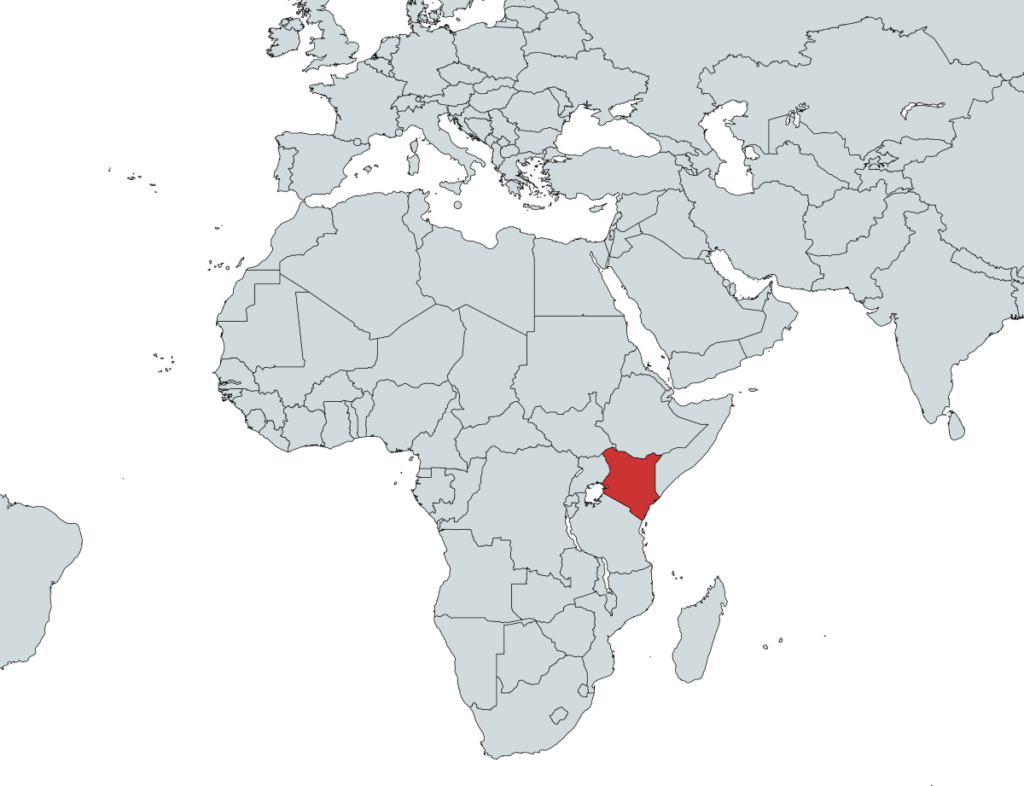Kenya

Kenya Country Overview
Kenya’s journey toward gender equality is marked by both challenges and opportunities, which is why WIMAGE focuses on Leadership and Governance, Education and Skills Development, Climate Resilience and Green Economy, and Digital Transformation and Economic Empowerment.
Population
Economic Landscape
Political Landscape
Social and Cultural Context
Gender Index Rankings
Population
Total Population: Approximately 55 million (as of 2024)
Gender Distribution: 50.5% female, 49.5% male
Youth Population: Over 70% of the population is under the age of 35
Urban vs Rural Distribution: 28% urban, 72% rural
Economic Landscape
GDP: $110 billion (2023 estimate)
Key Industries: Agriculture (tea, coffee, horticulture), Tourism, Manufacturing, ICT
Women in Workforce: Approximately 48%, with significant participation in agriculture and informal sectors
Gender Pay Gap: Women earn on average 23% less than men in formal employment
Challenges: Limited access to capital for women entrepreneurs, informal sector dominance, economic inequalities
Political Landscape
- Women’s Representation in Leadership:
- Parliament: 23% (National Assembly), 31% (Senate)
- County Government Leadership: 12% of governors are women
- Challenges: Cultural barriers, political intimidation, inadequate policy enforcement
- Key Policies Promoting Gender Equality:
- Constitution of Kenya (2010): Guarantees gender equality
- Two-thirds Gender Rule (not yet fully implemented)
- National Gender and Equality Commission oversight
Social and Cultural Context
- Gender Norms and Cultural Attitudes:
- Patriarchal structures dominate many communities
- Women are primarily responsible for household duties
- Slow but increasing acceptance of gender equality initiatives
- Traditional Barriers:
- Early marriages and childbearing
- Gender-based violence
- Limited inheritance and property ownership rights for women
Gender Index Rankings
- Global Gender Gap Index (2023): Ranked 95th out of 146 countries
- Human Development Index (2023): 0.601 (Medium human development)
- Women’s Empowerment Index: Moderate improvement in literacy and political participation
- Challenges Identified: Low financial inclusion for women, high maternal mortality rates, gender-based violence prevalence.
Programs Justification
Women remain underrepresented in leadership, with only 23% of parliamentary seats, while 15% of girls miss out on secondary education. Climate change disproportionately affects women, who form 75% of the agricultural workforce but lack access to resilient technologies. Additionally, the digital divide persists, with only 22% of rural women having internet access.
Gender-based violence (GBV) further exacerbates these challenges, with 45% of women in Kenya experiencing physical or sexual violence in their lifetime. By addressing these interconnected areas and combating GBV, we empower women and girls to lead, innovate, and drive sustainable change, creating a safer, more equitable, and prosperous Kenya for all.
Leadership and Governance
Education and Skills Development
Climate Resilience and Green Economy
Digital Transformation and Economic Empowerment
Leadership and Governance
- Representation in Parliament: Women hold only 23% of seats in the Kenyan Parliament (2023), falling short of the constitutional two-thirds gender rule.
- County Leadership: Only 7 out of 47 county governors in Kenya are women (2023), reflecting significant underrepresentation in local governance.
- Political Participation: In the 2022 general elections, women accounted for just 11% of elected political positions.
- Barriers to Leadership: A 2022 survey revealed that 65% of women in Kenya face cultural and financial barriers when seeking leadership roles.
- Women in Cabinet: As of 2023, women make up 30% of Cabinet Secretary positions, showing progress but still below parity.
Education and Skills Development
- Girls’ Enrollment: Despite progress, 15% of girls in Kenya do not transition to secondary school due to poverty, early marriages, and cultural barriers (UNESCO, 2023).
- STEM Participation: Only 22% of women in Kenya are enrolled in STEM-related fields at the tertiary level (World Bank, 2023).
- Literacy Gap: The female literacy rate in Kenya is 81%, compared to 88% for men (Kenya National Bureau of Statistics, 2023).
- Vocational Training: Less than 10% of women in rural areas have access to vocational or technical training programs (KNBS, 2023).
- School Dropouts: Approximately 1 in 4 girls in marginalized regions drop out of school due to lack of sanitary products (Ministry of Education, 2023).
Climate Resilience and Green Economy
- Women in Agriculture: Women comprise 75% of the agricultural workforce in Kenya but own less than 10% of the land (FAO, 2023).
- Climate Impact: Over 60% of women in rural Kenya report being severely affected by climate change, including droughts and floods (UNDP, 2023).
- Green Jobs: Only 12% of women in Kenya are employed in the renewable energy sector, despite its growth potential (Kenya Renewable Energy Association, 2023).
- Access to Resources: Just 20% of women have access to climate-resilient farming technologies or training (World Bank, 2023).
- Deforestation: Women in rural areas spend up to 5 hours daily collecting firewood, contributing to deforestation and health risks (Kenya Forest Service, 2023).
Digital Transformation and Economic Empowerment
- Internet Access: Only 22% of women in rural Kenya have access to the internet, compared to 35% of men (Communications Authority of Kenya, 2023).
- Digital Skills Gap: A 2023 report found that 65% of women lack basic digital literacy skills, limiting their participation in the digital economy.
- Tech Workforce: Women make up only 30% of the tech workforce in Kenya, with even fewer in leadership roles (Kenya Tech Report, 2023).
- Mobile Money: While 75% of women use mobile money services, only 20% use them for business purposes (GSMA, 2023).
- E-Commerce: Less than 15% of women-owned businesses in Kenya leverage e-commerce platforms to expand their markets (Ministry of ICT, 2023).

